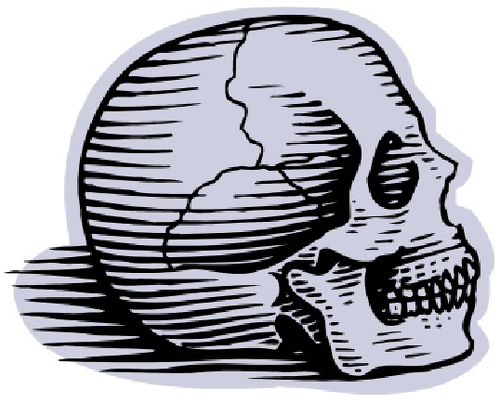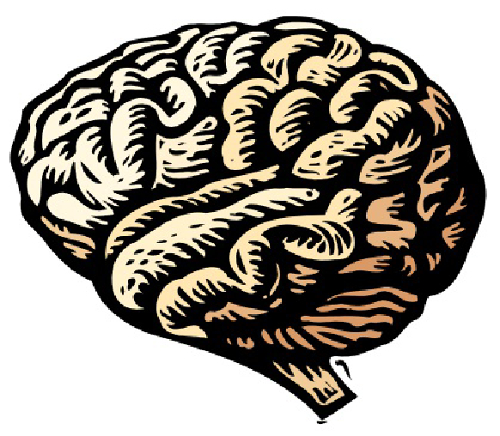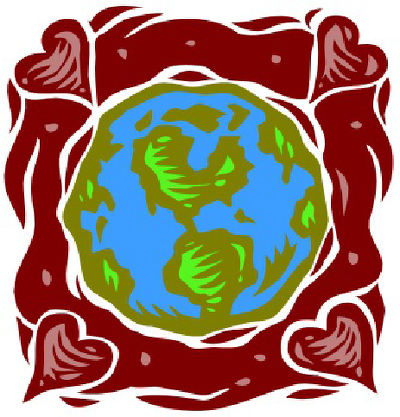
Superior Index Go to the next: Chapter 1
Print Files: A4 Size.
Copyright© 2011 by Paul F. Cunningham, Ph.D.
Rivier College, Nashua NH 03060-5086
A Primer of Transpersonal Psychology
UNIT 1 - WHAT IS TRANSPERSONAL PSYCHOLOGY? 15
Fig. 1-1 Definitions of Transpersonal Psychology 16
Fig. 1-2 Varieties of Transpersonal Phenomena 25
Fig. 1-3 Exceptional Human Experiences 26
Fig. 1-4 Various Meanings of Transcendence 35
Fig. 1-5 Transpersonal Psychology as an Approach to Religious Issues 41
Fig. 1-6 Miracle at Medjugorie: A Transpersonal Interpretation 51
UNIT 2 - WHAT ARE THE ORIGINS OF TRANSPERSONAL PSYCHOLOGY? 59
Fig. 2-1 "Unofficial" Intellectual History of Modern Transpersonal Psychology 117
UNIT 3 - CONTEMPORARY PERSPECTIVES IN TRANSPERSONAL PSYCHOLOGY 123
Fig. 3-1 Varieties of Expansion of Identity Observed in Psychedelic Sessions 140
Fig. 3-2 Key Assumptions of an Transpersonal Approach to Psychotherapy 148
Fig. 3-3 Some Assumptions of Orthodox, Western Psychology 152
UNIT 4 - HOW IS TRANSPERSONAL RESEARCH CONDUCTED? 157
Fig. 4-1 Varieties of Transpersonal Research Methods 159
Fig. 4-2 Miracle Cures and Their Medical and Ecclesiastical Assessment 166
Fig. 4-3 Case Studies of Healing at Lourdes 167
Fig. 4-4 "Best" Evidence for Psi Functioning 179
Fig. 4-5 How Psi Works: Some Interesting Findings 183
Fig. 4-6 Transpersonal Psychology Research Review 196
Fig. 4-7 Differences between Transpersonal and Traditional Approaches to Research 202

The monograph that you hold in your hands is the product of a need for an introductory textbook in the field of transpersonal psychology. While transpersonal psychology has developed into a full-fledged scientific, professional, and academic discipline since its founding by Abraham Maslow more than 35 years ago, it remains on the margins of conventional mainstream scientific psychology.
Whether or not transpersonal psychology will soon find its niche within the behavioral and social sciences is an open question. But when a discipline has inaugurated a number of peer-reviewed journals devoted to the subject matter of the field, founded several national and international professional societies that facilitate scholarly exchange among individuals involved in transpersonal therapy and research, and instituted numerous academic courses and degree programs in university settings around the world, then that discipline deserves a place within the framework of official psychology and ought to have adequate representation within mainstream college and university curricula. This monograph is a portion of a much larger project that is intended to deal with the first issue by addressing the second.
If transpersonal psychology wishes to find itself incorporated within the framework of official psychology, then serious thought needs to be given to what might be taught in a generalized course in transpersonal psychology. This monograph will hopefully be of service in that regard. It represents the first chapter of a projected 12-chapter textbook in transpersonal psychology for 2-year and 4-year colleges that covers topics ordinarily addressed in the typical introductory psychology course, but from a transpersonal point of view - introduction, biological foundations, sensation and perception, states of consciousness, learning and memory, language and thought, motivation and emotion, development, personality theory and measurement, psychological disorders, psychotherapy, and social behavior. Use of such an organizational framework will encourage a more complete coverage of transpersonal topics within traditional content domains, promote greater integration of transpersonal concepts and theories with the methods and findings with contemporary psychology, and more easily present transpersonal psychology within the framework of the contemporary mainstream educational process.
While more and more college courses are being offered on the subject of transpersonal psychology (a partial listing of schools and programs in transpersonal psychology can be found at www.atpweb.org), there are no standard texts or curricula offering the fundamentals of transpersonal psychology to help structure most courses. In approaching transpersonal psychology from an educational point of view, one would be amazed at the lack of a recognized, agreed upon general curriculum, and how various courses intended to provide an introduction to transpersonal psychology vary considerably in course content and structure. Few transpersonal psychologists use the same general textbooks.
The lack of a standardized curriculum is not surprising in a field where transpersonal psychologists themselves disagree on the importance and validity of certain areas of investigation (e.g., parapsychology), where fundamental tenets of the field have not been resolved (e.g., how foundational is the perennial philosophy?), where wide divergence of opinion exists on basic issues of methodology and goals of research (e.g., is transpersonal psychology a science?), and where most psychologists who espouse a transpersonal orientation are self-taught in the field and may be uncomfortable teaching areas of inquiry with which they are unfamiliar (e.g., the clinician who overlooks the experimental research or the experimentalist who ignores the clinical data). This monograph is offered both as a preliminary attempt to address this growing need for a generalized model of curricula for undergraduate courses in transpersonal psychology and as an encouragement to teachers of psychology to introduce this exciting area of investigation to their students.

My personal introduction to the exciting realm of transpersonal psychology began during the spring semester of my junior year at Our Lady of Providence Seminary in Warwick, Rhode Island. I was 20 years old at the time and studying to become a Roman Catholic diocesan priest. I was deep in my study of Darwinian anthropology, Freudian psychology, Biblical religions, existential philosophy, and natural science. Ever since I can remember I have had a burning desire to understand the true nature of human personality and humanity's proper relationship to spiritual reality and to the rest of creation. I thought I had discovered those Truths (capital T) in my academic courses that year of 1970.
What I Learned. I learned in my anthropology course about Charles Darwin who spent over half his life proving the validity of his theory of evolution. Generations of scientists since have viewed the natural world through its light, taking Darwinian theories for granted as being a literal interpretation of the origins of species, and attempting to make human nature conform to the picture of evolution as Darwin conceived it. Certainly Darwin's considerable achievement in classifying the different species and in describing their struggle for survival is an entirely true and objective representation of the natural world. I learned in my psychology course about Sigmund Freud who invented such a comprehensive system of psychology that it seemed to explain everything about human experience and behavior. Such an all-inclusive and internally consistent theory must be true, I thought, because it possessed such sweeping explanatory power. I learned in my religion course about the Old Testament God Jehovah and about Jesus Christ, the Son of the only God, who declared that His was the Way, the Truth, and the Life. The Holy Scriptures and the theological doctrines and dogmas of His Church must certainly be divinely true if His Holy Spirit inspired them. I learned in my philosophy course about existential thinkers such as John Paul Sartre and Albert Camus who were committed to engaging the painful realities of aloneness and death exactly as they are and refused to gloss over suffering or arbitrarily pretend that life is inherently meaningful. Such a demand for authenticity, freedom, and autonomy must certainly be true and the correct defense against delusion and selfdeception. I learned in my natural science course that science, too, seemed committed to engaging reality exactly as it is. Objective, empirical science must certainly be the final arbiter of what is true and real. When I attempted to integrate these diverse beliefs and ways of thinking into a single coherent framework, however, I became filled with feelings of tension and conflict, stress and strain, for how could they all be true? As I examined in more detail the assumptions and implications of the course material that I was learning, I gradually began to lose a sense of my own worth and purpose.

What I Came to Believe. My course in Darwinian theory revealed our species to be a creature pitted against itself (as ego is pitted against id) and whose nature is amoral (there are no standards of right or wrong as anything goes for survival sake). In the Darwinian world, nature cares little for the individual, only for the species. The attainment of adulthood has little purpose except to insure the further existence of the species through procreation. The species itself appears to have no reason except a mindless determination to exist. Tainted with brutish and destructive impulses, I was the member of a greedy and predatory species, a murderer at heart and nature's despoiler, a blight upon the planet, and the victim of an indifferent Nature that brought meaningless death. I became separate from nature and in competition with all other creatures in an endless struggle for survival. There is no possibility of spiritual survival as far as evolutionary theory is concerned, because evolutionary Darwinian man and woman are not created with a soul. All psychological activity is scaled down in between life and death. Death becomes an affront to life and comes to imply a certain kind of weakness, for is it not said that only the strong survive?

My course in Freudian psychology taught me to believe that my unconscious self was certainly devious, capable of the most insidious subconscious fraud, and filled with savage rage and infantile impulses that I could not trust, no matter what I told myself. The unconscious was understood to be a garbage heap of undesirable impulses, long ago discarded by civilization. Slips of the tongue and dreams betrayed the self's hidden nefarious true desires. The spontaneous self, the impulsive portion of my nature, became most suspect, since in my spontaneous acts I could unwittingly reveal not my basic goodness, but the hidden shoddiness of my motives. Programmed and conditioned from childhood to fail or succeed, the heights and depths of each person's experience were seen to be the result of infantile behavior patterns that rigidly controlled us for a lifetime.

Darwinian and Freudian concepts were also reflected in my Bible studies. Given the earth as living grounds by a capricious and vengeful God, who would one day destroy the world, I came to believe that our species was bound for ultimate tragedy and extinction. Born blighted by original sin, created imperfect by a perfect God who then punished me for my imperfections, and who would send me to hell if I did not adore Him, I came to see myself as an innately flawed and sinful self, a creature bound to do wrong regardless of any strong good intent. Being the member of a species of sinners, contaminated by original sin even before birth, innately driven by evil, and sometimes demonic, forces that must be kept in check by good work, prayer, and penance, I came to distrust my inner self and to fear my own spontaneity. How could I be "good" when my self was "bad"? The conditions of life and illness were seen as punishment sent by God upon his erring creatures, or as a trial sent by God, to be borne stoically. Life was indeed a valley of sorrows.

My course in existential philosophy was simply a variation upon the theme. It convinced me that life was an unpleasant and inherently meaningless condition of existence from which release was welcomely sought and that the end justifies the means, especially if that end is Man. Life was replete with guilt, pain, suffering, and death, and in the words of Woody Allen, "was over much too quickly." One is born alone and dies alone. There is no escape from this condition of isolation for the self who perceives the universe and everyone else as "not-self" and "other" ("Hell is other people"). Jean Paul Sartre's novels, Nausea and No Exit, persuaded me that I was born without reason (because "existence precedes essence" and no a priori meaning or purpose could be assigned to my being since nothing is pre-given but must be created), that I prolong myself out of weakness (because I do not have the courage to commit suicide), and that I will die by chance in an ultimately meaningless universe. Belief in God, in the existence of spiritual realities, and in an afterlife may serve as a consolation to the ego faced with the threat of nonexistence, but I must not deceive myself. The separate self is eventually overcome by death. The skull always grins at the banquet of life. Everyone must die; everything gained must eventually be relinquished. Nothing lasts; everything changes. Eventually I must confront the threat of my own extinction and refuse to pretend that things can get better. Try as I may to create meaning through my individual actions, even the most heroic actions cannot overcome feelings of existential dread and ontological anxiety. Like a character in one of Pirandello's novels, I was a personality in search of an author. Like an actor in one of Beckett's plays, I was waiting for a Godot who would never arrive. Even love itself seemed only a romantic illusion.

My natural science course had the most impact of all. Science led me to suppose that my exquisite selfconsciousness and all of life itself was nothing more than an accidental by-product of inert atoms and molecules and the chance conglomeration of lifeless chemical elements, mindlessly coming together into an existence that was bound to end in a godless, uncaring, and mechanical universe that was itself accidentally created. The emotions of love and joy, the virtues of kindness and generosity, all thoughts and wisdom, religious sentiments and consciousness itself were merely epiphenomena of the erratic activity of neural firings, hormones, and neurotransmitters. Consciousness was the result of a brain that was itself nothing but a highly complicated mechanism that only happened to come into existence, and had no reality outside of that structure. The self was simply the accidental personification of the body's biological mechanisms. Feelings of conscious choice were only reflections of brain state activity at any given time. The great creative, individual thrust of life within each person became assigned to a common source in past conditioning or to the accidental nature of genes or reduced to a generalized mass of electrochemical impulses and neurological processes.1

Projecting these ideas upon nature at large, the natural world appeared equally explainable, dangerous, and threatening, especially the non-human animal world. Given to humans to do with as we wished by our specieistic God, animals were in a "natural" subordinate position in the Great Chain of Being. Lifted up above the beasts at the pinnacle end of a great evolutionary scale, only humans possessed consciousness and self-consciousness, intellect and imagination, emotion and free will, and the dignity of a spiritual life. Only humans were to be granted souls or a rich psychological life. Animals were mere electrochemical machines that operated solely by the mechanism of instinct. Being creatures literally without a center of meaning, animals were to be regarded simply as physical objects, like rocks and stars, blind alike to pain or desire and without intrinsic worth or value.
An individual animal's existence could have no higher meaning or purpose than to be a resource for human use or consumed as mere foodstuff in a daily tooth-and-claw struggle for survival that was everywhere beset by the threat of illness, disaster, and death. The sacrifice of hundreds of thousands of animals in experiments that would be unethical if performed on human beings became justified in the pursuit of knowledge if it was a means toward the goal of protecting the sacredness of human life and the survival of the human species, regardless of the consequences.

Becoming the Self I Thought I Was. Unknown to me at the time, my academic course work was indoctrinating me into what transpersonal psychologist Charles Tart (1992a, Chapter 2) calls the "Western Creed" - a set of implicit assumptions about the nature of the psyche and the nature of reality that have come to characterize much of the modern secular world, that have practical consequences on the human spirit, and that block progress in understanding the spiritual side of ourselves. Operating for the most part outside of my conscious awareness, these psychologically invisible beliefs programmed my experience to such an extent that they took on the appearance of fact. Interpreting the private events of my life in light of these assumptions about the nature of physical reality and human personality, I unconsciously put together my perceptions so that they seemed to bear out those beliefs. My beliefs selectively structured my experience so that experience came to fit the beliefs I had about it. Perceptions and beliefs became mutually and selectively reinforcing. What I believed to be true became true in my experience. Imagination and emotion, following the contours of my beliefs, not only colored and intangibly structured my subjective experience, but also conditioned me to act in certain ways in accordance with those beliefs. Believed in fervently enough, they came to act like powerful hypnotic suggestions that triggered specific actions strongly implied by the beliefs. The end result was a set of unexamined structured beliefs that were automatically acted upon. I created events that more or less conformed to those beliefs, and thus became the self that I thought I was.

"Science Loves Skepticism Except When Skepticism is Applied to Science." There always remained lingering doubts, however, about what I had come to believe. I found it ironic that the basis of the scientific empirical method and the framework behind all of our organized structures of science, rested upon a subjective reality that was not considered valid by the very scientific institutions that were formed through its auspices. How could such a vital consciousness as my own even suppose itself to be the end product of the chance meeting of inert elements that were themselves lifeless, but somehow managed to combine in such a way that our species attained culture, technology, philosophy, science, medicine, literature, and space travel?2 Science almost made me believe in magic! What a cosmic joke that the atomic and chemical composition of my own brain was somehow intelligent enough to understand the irony of its own meaninglessness. Certainly a brain that could conceive of purpose, meaning, and creativity somehow had to emerge from a greater purpose, meaning, and creativity. Certainly it was not purposelessness that gave us the design of nature, the well-ordered genetic activity, or the elegant sequences of molecular structures that support the creation of amino acids and proteins that sustain physical life. Certainly it was not meaninglessness that gave rise to the creative drama of our dreams. Certainly it was not genetic chance that is responsible for the precision with which we grow spontaneously, without knowing how, from a fetus to an adult. Certainly it was not environmental necessity that caused the existence of heroic themes and ideals that pervade human life. Surely all of these give evidence of a greater meaning, purpose, and context in which we have our being.
How could atheistic science, I wondered further, stress the species' accidental presence in the universe and the belief that we owe our physical existence to the chance conglomeration of atoms and molecules and still expect our species to be the most moral of creatures or to feel that one's life has meaning or purpose? How can we trust ourselves and look at ourselves with self-respect and dignity and live lives of honor, or expect goodness and merit from others, if we believe we are members of a species in which only the fittest survive through a struggle of toothand-claw, as implied by the theories of evolution? One question led to another. Yet while referring to the Big Bang theory or to the theory of evolution, my teachers seemed to accept them as facts about existence. It appeared almost heretical to express any skepticism that threatened the given wisdom of those theories that served to provide our culture's "official" version of events.
When the full weight of these unanswered questions and unquestioned beliefs finally fell upon me, a sick and sinking feeling began to well up in the pit of my stomach. Amid such a conglomeration of negative beliefs, the idea of a good and innocent inner self seemed almost scandalous. To encourage expression of that self appeared foolhardy, for it seemed only too clear that if the lid of awareness were opened, so to speak, all kinds of inner demons and enraged impulses would rush forth. This webwork of beliefs had deprived my mind and body of the zest and purpose needed to enjoy pursuits or activities and made any endeavor appear futile. I began to feel adrift, without a higher goal or vision. I felt suspicious, frightened, angry, aloof, and alone. In this confusion of thoughts and fears, I felt my life to be meaningless and hungered for something more sustaining. I was experiencing what William James (1936) called "soul sickness."

The Kite as My Symbol of Transformation As I lay exhausted upon my bed one spring afternoon in 1970, I slipped into a trance-like state and had a waking dream. My confused and disordered mind suddenly symbolized itself as a kite connected to a long string held by mental hands. The kite was fluttering in fits and starts, buffeted about by turbulent gusts of inner wind that threatened to tear it to pieces. "How can I stop this violent commotion of my mind?" I thought aloud. "Cut the string," an inner voice replied. "But if I do that, then I'll lose my mind," I answered back, fearing that if I cut that string I would release my mind to fly off into some dark, unfathomable and limitless recess of the psyche, forever swallowed up by my own subjectivity. "What else can I do?" I implored. "Pull the kite in," an answer came. Slowly I began to tug on that mental string, but the more I pulled, the more wildly did that kite toss and turn. Thrown about by the tumultuous energy of some wild psychic wind, my mental kite threatened to tumble and shatter onto that inner landscape. I was at a loss at what to do to end this turmoil of body, mind, and spirit. I feared that I was losing my mind.
At this point, my mind suddenly opened up and leaped beyond itself. Some indescribable element, some spiritual intangible, touched me and said: "If you want to save yourself, you must first lose yourself. If you want to hold onto yourself, then you must let yourself go." All at once I knew what I had to do. In a moment of faith, instilled by an unaccustomed sense of trust and safety, I slowly let the string out so that the kite ascended higher and higher until it found its way up through the turbulence and turmoil into the calm and peaceful sky above. My mental kite now floated easily and gently with a newfound sense of ease and freedom. I was suddenly filled with an additional energy, a new buoyancy and joy. Sitting up in bed and opening my eyes, I sat transfixed. Another world seemed to shimmer within and around whatever I looked at. Everything seemed to be what it was, yet somehow more. A change had occurred in me. I felt my personality click into a new focus and become lined up with an invisible part of my own reality that I had barely sensed before. The entire feeling-tone of my personality was changed. In that brief moment of intense, expanded consciousness, I felt and experienced directly a Presence so creative, understanding, and lovingly permissive that its good nature and loving intent could indeed create and maintain worlds. In a way quite difficult to describe, I felt myself to be a part of nature's framework and one with nature's source.
My earlier psychological reality became meaningless to me. It was superseded by a biologically and spiritually rooted faith that my existence was meaningful precisely because of my connection with nature and with that greater indefinable framework of existence from which all life springs, even though that meaning was not intellectually understood at the time. I felt deeply within myself that the quality of identity and the nature of existence were far more mysterious than I could presently understand.

Epiphany. Looking inward and remaining open to my intuitions, I felt deeply within myself indivisible connections not only with the earth itself, but with deeper realities. While in the throes of what seemed to me to be inspiration of almost unbearable intensity, I got the idea that the universe was formed out of what God is, that it was the natural extension of divine creativity, lovingly formed from the inside out, so to speak. I felt that in certain basic and vital ways, my own consciousness and being was a portion of that divine gestalt. As philosopher-theologian John Hick (1999) in his book, The Fifth Dimension: An Exploration of the Spiritual Dimension, put it:
There is an aspect of us that is `in tune' with the Transcendent. This aspect is referred to as the image of God within us; or as the divine spark spoken of by Plotinus, Pseudo-Dionysius, Eckhart, Ruusbroec, Suso, Tauler and many other Christian mystics; or as `that of God in every man'; or as the atman which in our deepest nature we all are; or as our `true self', the `selfless self', or as the universal Buddha nature within us. It is this aspect of our being that is affected by the ultimately Real to the extent that we are open to that reality. (p. 41)
I became aware that God (or whatever term you wish to use for Nature's source) is so much a part of His (or Her or Its) creations that it is almost impossible to separate the Creator from the creations, that each hypothetical point in the universe is in direct contact with God in the most basic terms, and that this indissoluble connection can never be severed. I got the picture that there is a portion of God that is directed and focused and residing within each of us that is more intimate than our breath. It is the force that forms our flesh and our identities in that it is responsible for the energy that gives vitality and validity to our unique personalities. I perceived all Being to be continually upheld, supported, and maintained by this ever-expanding, ever-creative energy that forms everything and of which each human being is a part. As physicist-theologian John Polkinghorne (1998) in his book Belief in God in an Age of Science put it:
Our moral intuitions are intimations of the perfect will, our aesthetic pleasures a sharing in the Creator's joy, our religious intuitions whispers of God's presence. The understanding of the value-laden character of our world is that there is a supreme Source of Value whose nature is reflected in all that is held in being. (pp. 19-20)
I also felt the inconceivable vitality of a God that is truly multidimensional - a God that is a part of creation and yet is also more than what creation is, in the same way that the whole is more than the sum of its parts. His nature transcends all dimensions of activity, consciousness, or reality, while still being a part of each. Yet this is no impersonal God. Since its energy gives rise to you and me and all human personalities, how could this be? This portion of God that is both aware of itself as you, that is focused within your existence, and that is also aware of itself as something more that you, is a loving and creative, redemptive God that is both transcendent and personal. This portion of God cherishes and protects you and looks out for your interests and may be called upon for help when necessary in a personal manner through prayer that always contains its own answer if you believe and desire to receive it (Mark 11:24).
It is very difficult to try to assign anything like human motivation to God. I can only say that that initial experience revealed the existence of an entity who was possessed by "the need" to lovingly create from His own being - to lovingly transform His own reality - in such a way that even the most slightest thought that emerged within His infinitely massive, omnipotent, superlative, and creative imagination attained dimensions of actuality impossible to describe. This was no static, impassible God that I perceived. It was a vision and version of a God who, seeking to know Himself, constantly and lovingly creates new versions of Himself out of Himself (or Herself). This "seeking Himself" is a creative activity, the core of all action; God acting through creatio continua (Peacocke, 1979). Each creation carries indelibly within itself this characteristic of its Source. Just as one's awareness and experience of God constantly changes and grows, all portions of God are constantly changing, enfolding and unfolding as the universe does (see, for example, Bohm, 1980).

The loving support, the loving encouragement, the need to see that any and all possible realities become probable and have the chance to emerge, perceive, and love - that is the intent of the divine subjectivity and creativity that I perceived in that state of expanded consciousness. I felt deeply that our closest approximation of the purpose of the universe could be found in those loving emotions that we might have toward the development of our own children, in our intent to have them develop their fullest capabilities. And God loves all that He has created down to the least. He is aware of every sparrow that falls because He is every sparrow. Everything that was or is or will be is kept in immediate attention, poised in a divine context that is characterized by such a brilliant concentration that the grandest and the lowest, the largest and the smallest, are equally held in a loving constant focus. His awareness and attention is indeed directed with a prime creator's love to each consciousness. God IS Love (1 John, 4:8, 16).
Aftermath. The highly charged energy generated by this experience was enough to change my life in a matter of moments. The insights that I received strongly clashed with previously held ideas and beliefs, giving the experience its initial explosive, volatile, and intrusive quality. I had been led by my experience beyond the framework of beliefs that had given it birth. My task was now to correlate the new intuitive knowledge with the beliefs of the Western Creed that I had so willingly accepted before, and to reform my knowledge frameworks to make them strong enough to support the new insights. Accepted frameworks and answers now made little sense to me. I could no longer accept answers given by others, but now insisted upon finding my own. I could no longer continue to think about God in the old ways, for the experience had brought me far beyond such a point. I had now to free myself and be true to my own vision. Shortly thereafter I left the Seminary to see the world firsthand, driven by a fine impatience, a divine discontent that drives me on even today. I felt immeasurably strengthened and supported by an inner certainty that instilled in me a sense of safety, optimism, and trust in my own nature and in that unknown source in which we all have our being and from which our vitality springs daily. I knew somehow that my existence has a meaning and purpose even if that meaning and purpose is not intellectually understood.

Expanding the circle of compassion. The insights that I received during that state of expanded consciousness required me to become more responsive and responsible in my behavior. It also brought with it a sympathy with life that had earlier been lacking, especially for animals - a sensitivity that remains strong, challenging, and intense to this day. I understood for the first time that my humanness did not emerge by refusing my animal heritage, but upon an extension of what that heritage is. It was not a matter of rising above my animal nature to truly appreciate my spirituality, but of evolving from a fuller understanding of that nature. I am not separated from animals and the rest of existence by virtue of possessing an eternal inner consciousness; rather, such a consciousness is within all life, whatever its form. The consciousness that exists within animals is as valid and eternal as my own, for each individual being is ...
A vital, conscious portion of the universe [that] simply by being, fits into the universe and into universal purposes in a way that no one else can ... an individualized segment of the universe; a beloved individual, formed with infinite care and love, uniquely gifted with a life like no other. (Butts, 1997a, pp. 147-148)

I also came to understand the symbolism of my kite experience: There is a portion of universal creative energy that becomes individualized to form my being and that sustains and nourishes my existence, and when I become too intent in maintaining my own reality I lose it, because I am denying the creativity upon which it rests.
The farther reaches of transpersonal psychology. When my formal training as a psychologist began, I was constantly on the outlook for some kind of framework that would help me translate that spectacular inner vision into terms that made psychological sense. Transpersonal psychology and the writings of gifted writer and mystic Seth-Jane Roberts (Butts, 1995, 1997a, 1997b, 1997c, 1998a, 1998b, 1999a, 1999b, 1999c, 2000, 2002, 2003a, 2003b; Roberts, 1966, 1970, 1972, 1974, 1975, 1976, 1977a, 1977b, 1978, 1979a, 1979b, 1981a, 1981b, 1986a, 1986b, 1986c) has helped me to make that translation in a way that was psychologically sound and faithful to the underlying complexity of the original experience. The works of Jane Roberts, collectively referred to as The Seth Material, strongly informs the content of the present monograph. Arguably transpersonal in origin, "the basic firm groundwork of the [Seth] material and its primary contribution lies in the concept that consciousness itself indeed creates matter, that consciousness is not imprisoned by matter but forms it, and that consciousness is not limited or bound by time or space" (Butts, 1997c, p. 312). The writings of Jane Roberts hint at the multidimensional nature of the human psyche and identify potentials of exceptional human experiences and transformative capacities that are a part of our species' heritage. In my view, systematic study of The Seth Material has the potential of offering the field of transpersonal psychology an opportunity of initiating its own further development, truly making it the "`higher' Fourth Psychology, transpersonal, transhuman, centered in the cosmos rather than in human needs and interest, going beyond humanness, identity, self-actualization, and the like" (Maslow, 1968, pp. iii-iv) that Abraham Maslow envisioned it to be.


Seeking spirituality in contemporary life. There has been a striking increase of interest in things "spiritual" over the past 30 years. One need only visit a local bookstore to find shelves of books and audiotapes on topics such as altered states of consciousness and contacting one's inner guide, extrasensory perception and lucid dreaming, meditation and mysticism, near-death experiences and out-of-body experiences, reincarnation and shamanism, spiritualism and trance channeling. Culturally and socially, there is a growing desire for books, seminars, audiotapes, magazines, and academic courses that deal with exceptional human experiences and human transformative capacities. People are "desperately seeking spirituality" (Taylor, 1994).
Not a passing fad. The cultural and social interest in spirituality is not a passing fad, nor has its absorption into mainstream contemporary life diminished its vitality or strength over time. The modern trend away from traditional collectivist forms of exoteric religion, on the one hand, and the postmodern movement toward innovative personal forms of esoteric spirituality, on the other, coupled with the rediscovery of ancient and cross-cultural forms of spiritual practices, have given today's social and cultural interest in spiritual experiences and human transformative capacities a strong grounding in contemporary life.
Interest in religion extends to modern psychology. Interest in spirituality is not confined to the general public, but extends to modern psychology. Psychology's interest in spirituality and religion goes back at least to the work of Sir Francis Galton whose paper titled "Statistical Inquiries in the Efficacy of Prayer" (Galton, 1872) examined the correlations between certain religious practices and physical health (and found none). William James's 1902 classic account of "The Varieties of Religious Experience" is a landmark in the history of modern American psychology (James, 1936).
Clinical value of religious beliefs recognized. In the area of counseling psychology, research connecting religion, spirituality, and health has been a vibrant research area (Engels, 2001; Fretz, 1989). The American Psychological Association (APA) has acknowledged the clinical value of using client's religious beliefs in therapy, publishing such books as "Religion and the Clinical Practice of Psychology" (Shafranske, 1996) and "A Spiritual Strategy for Counseling and Psychotherapy" (Richards & Bergin, 1997). An individual's religious orientation is now viewed as a useful adjunct to traditional forms of therapy in bringing about desired therapeutic outcomes.
Orthodox psychology's view of religion and spirituality has not always been a positive one. Humanity is by nature a spiritual creature. It is one of our strongest attributes as a species and yet it is the part of our psychology most often overlooked by conventional psychology. As principle investigators of the NIH Working Group on Research on Spirituality, Religion, and Health observed: "For much of the 20th century, [research on spirituality and religion] were isolated from mainstream scientific discourse and journals of the field" (Miller & Thoresen, 2004, p. 55). Lack of attention to humanity's spiritual nature is reflected in the fact that the term "religion" or "spirituality" is not mentioned in most introductory psychology textbook. Orthodox psychology has traditionally had little regard for what Gordon Allport (1969) called the "religious sentiment" and its function of "relating the individual meaningfully to being" (p. 98) because it had long been believed that ...
Devoteness reflects irrationality and superstition. A religious orientation serves as a crutch for people who can't handle life. Religious beliefs indicate emotional instability. Comments like these illustrate psychology's traditional view of religion. Although William James and other early psychologists were interested in the topic, psychologists since Freud have generally seen religious belief and practice as signs of weakness or even pathology. (Clay, 1996, p. 1)
Psychology again exploring topics relevant to science and religion. Yet psychology's potential contribution to the task of understanding humanity's "religious sentiment" and clarifying the relationship between science and religion in the modern world cannot be denied. "Next to the deep mystery of the divine nature, the mystery of the human person is of central significance for the whole discussion, since scientific and religious concerns intersect most clearly in our embodied nature" (Polkinghorne, 1998, p. 80). Psychology is now exploring the following areas that are relevant to this topic:

Scientific study of consciousness leads to "birth" of transpersonal psychology. These studies have thrown light on how spiritual practices work, confirmed some of their benefits, and led to the birth of "transpersonal psychology," a field of psychology that emerged in the late 1960's out of humanistic psychology, and that is dedicated to integrating the wisdom of the world's premodern religions, modern psychological sciences, and constructive postmodern philosophies (Wulff, 1991, Chapter 12).
What are transpersonal experiences? Transpersonal psychology has as one of its tasks the scientific investigation of transpersonal experiences. What are "transpersonal experiences"?
Transpersonal experiences may be defined as experiences in which the sense of identity or self extends beyond (trans) the individual or personal to encompass wider aspects of humankind, life, psyche, and cosmos ... [Their] correlates include the nature, varieties, causes, and effects of transpersonal experiences and development, as well as the psychologies, philosophies, disciplines, arts, cultures, lifestyles, reactions, and religions inspired by them, or that seek to induce, express, apply, or understand them. (Walsh & Vaughn, 1993a, pp. 3, 269)
An introduction to transpersonal psychology. This monograph presents an introduction to transpersonal psychology - its scope, historical origins, contemporary perspectives, and research methods. Various definitions of transpersonal psychology are distinguished, phenomena studied by transpersonal psychologists are identified, transpersonal psychology's relationship to religion is described, and the importance of the transpersonal vision is explained. The premodern roots, modern emergence, and postmodern developments of transpersonal psychology are outlined. How transpersonal research is conducted and described.
The transpersonal vision. What transpersonal psychology has discovered, and what ancient mystical traditions have disclosed is that there are "unexplored creative capacities, depths of psyche, states of consciousness, and stages of development undreamed of by most people" (Walsh & Vaughn, 1993a, p. 1). Transpersonal psychology has opened up new areas of comprehension and creativity for contemporary psychology by calling attention to the existence of aspects of personality action that transcend standardized, orthodox ideas about the nature of the human psyche and, by implication, the nature of the known and "unknown" realities in which we dwell.